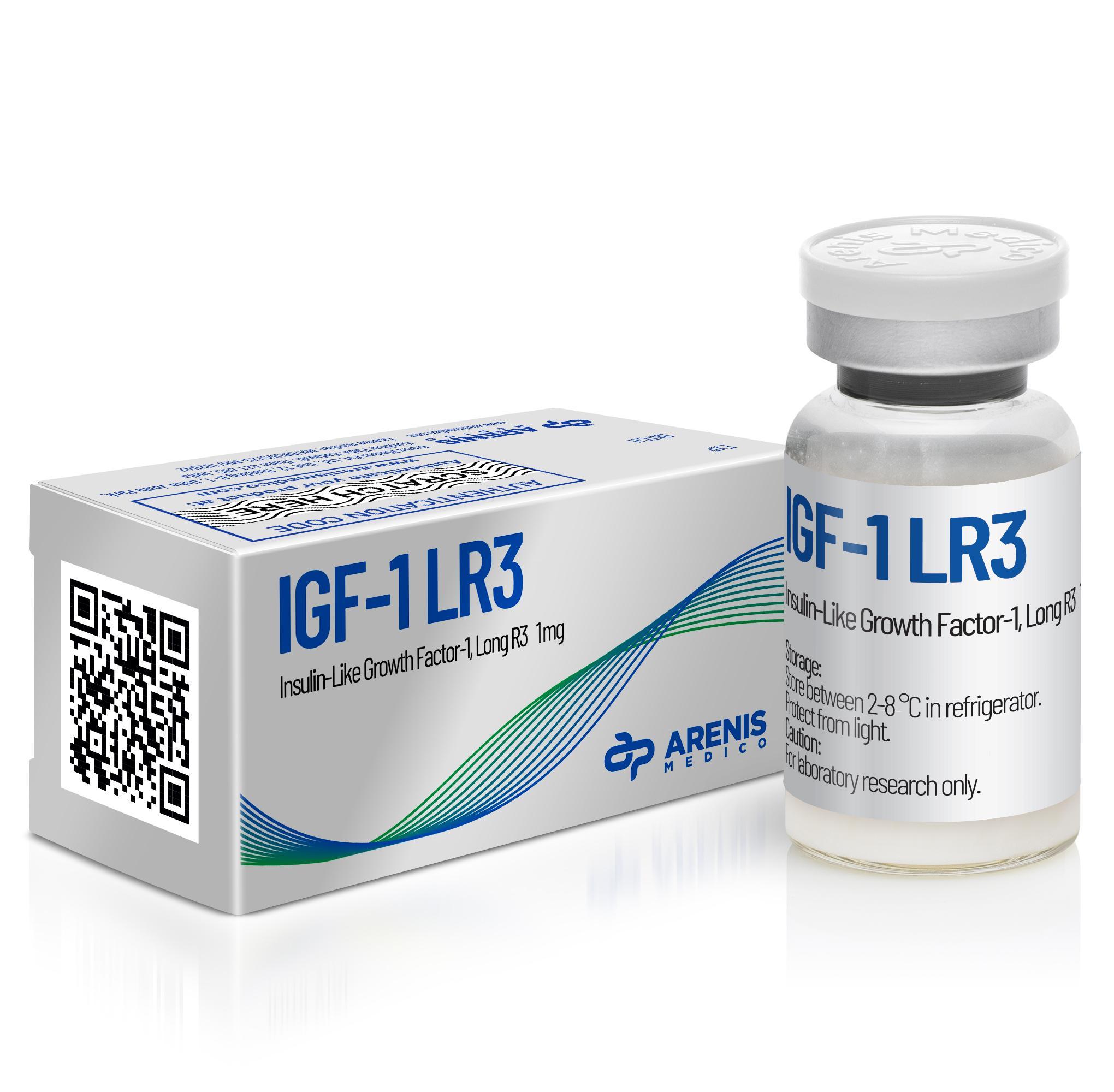
IGF-1 LR3 — 1mg Insulin-Like Growth Factor-1, Long R3
IGF-1 LR3 contains 1mg of Insulin-Like Growth Factor-1, Long R3.
IGF-I is an important hormone for human development. Its levels are especially high during childhood and adolescence, where it supports linear growth, as well as the growth of nearly all body tissues. Serum IGF-I levels decline greatly in adulthood, though remain substantial throughout life. This hormone will continue to play important roles in metabolism and physiology, including the support of skeletal muscle mass and strength. IGF-I has several key anabolic/anti-catabolic activities. It supports the synthesis of new muscle protein, satellite cell activity, and the incorporation of new nuclei into muscle cells. It is also noted for reducing the activity of both p27Kip1 and myostatin, which are two powerful inhibitors of muscle growth. As such, IGF-I is regarded as possessing both strong anabolic and anti-catabolic properties.
Side Effects
The most common adverse reaction to Long(R3)-IGF-l is hypoglycemia. Signs of mild to moderate hypoglycemia include hunger, drowsiness, blurred vision, depressive mood, dizziness, sweating, palpitation, tremor, restlessness, tingling in the hands, feet, lips, or tongue, lightheadedness, inability to concentrate, headache, sleep disturbances, anxiety, slurred speech, irritability, abnormal behavior, unsteady movement, and personality changes. If any of these warning signs should occur, one should immediately consume a food or drink containing simple sugars such as a candy bar or carbohydrate drink. Signs of severe hypoglycemia include disorientation, seizure, and unconsciousness. Severe hypoglycemia can lead to death and requires immediate emergency medical attention. Note that in some cases the symptoms of hypoglycemia can be mistaken for drunkenness.
Long(R3)-IGF-l should never be taken before sleep or in higher than recommended doses. A meal or snack must be consumed within 20 minutes (before or after) of administration.
The subcutaneous administration of Long(R3)-IGF-l may cause redness, itching, or bruising at the site of injection. It may also cause a localized increase of adipose tissue, which may be compounded by the repeated administration at the same site of injection. For these reasons, intramuscular injection is generally preferred with this substance.
Other potential adverse reactions to Long(R3)-IGF-l include joint pain, growth of the tonsils, snoring, headache, dizziness, convulsions, vomiting, ear pain, hearing loss, and hypertrophy of the thymus gland. Long(R3)-IGF-l can stimulate the growth of internal organs. Enlargement of the kidney, spleen, and heart were all noted in studies with recombinant IGF-I therapy. Elevations in cholesterol and triglycerides were also observed.The overall relationship between Long(R3)-IGF-I use and cardiac changes remains unclear.Thickening of facial soft tissues is also possible, and should be monitored. The abuse of Long(R3)-IGF-l may cause acromegaly, which is characterized by a visible thickening of the bones, most notably the feet, forehead, hands, jaw, and elbows.
Administration
When used for physique- or performance-enhancing purposes, Long(R3)-IGF-l is primarily given by intramuscular injection. A dosage of 20-80 meg daily is most commonly used. This is given in one application, usually earlier in the day. A meal with sufficient carbohydrate content is consumed within 20 minutes of injection to help reduce the likelihood of hypoglycemia. Long(R3)-IGF-l is often injected into the muscle that will be trained that day, in an effort to support site-specific growth. However, the efficacy of this practice remains unclear.
It is generally advised to taper-up the dosage of Long(R3)-IGF-l.The user often begins on the low end of the dosage range (20 meg), and increases the amount by 5-10 meg every 3-4 days, until a desired stable dosage is reached. This practice can help acclimate the user to the effects of Long(R3)-IGF-l, especially its potential blood-sugarlowering properties (see: Side Effects).
Cycles of Long(R3)-IGF-l usually last 30-40 days. Beyond this, there is some concern about desensitization to its anabolic effects. After each cycle, a break of at least 4-6 weeks is usually advised. This drug has not been subject to extensive human testing, however. Likewise, its potential for desensitization has not been clearly characterized.
Back to products
